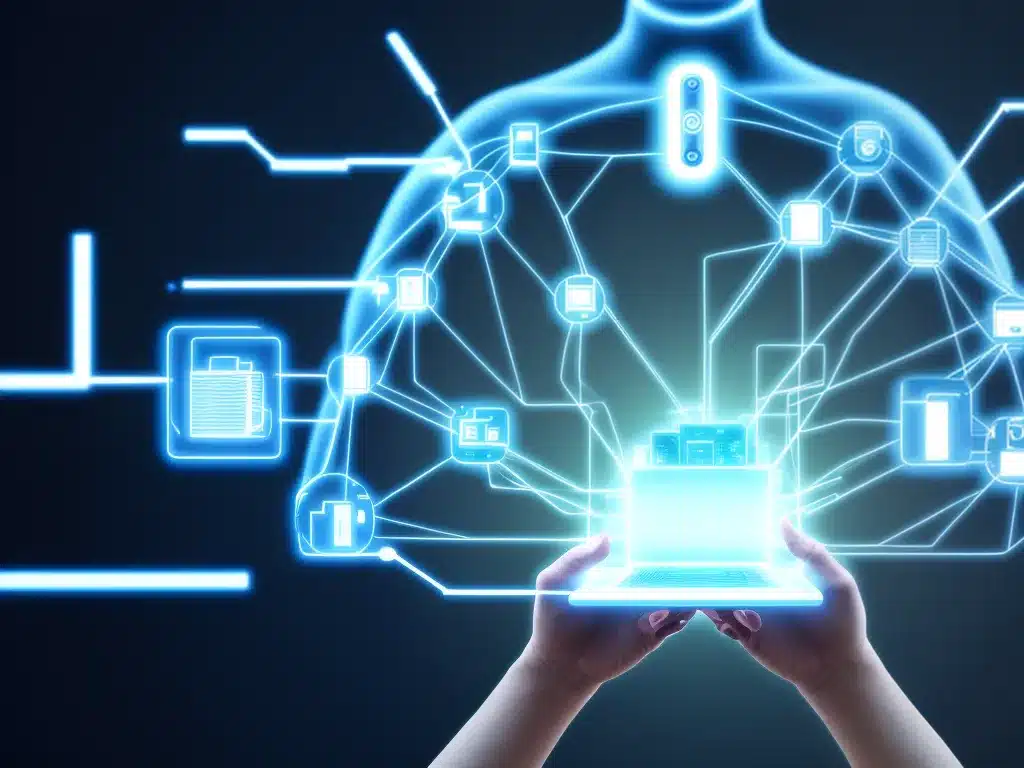The Role of AI in IoT: How AI Enhances Connected Devices
Introduction
The Internet of Things (IoT) refers to the billions of physical devices around the world that are now connected to the internet, collecting and sharing data. IoT enables devices to communicate with each other and with other networks. From smart home appliances to wearable health monitors to self-driving cars, IoT is transforming many industries.
While IoT provides many benefits, the massive amount of data generated can be overwhelming. This is where artificial intelligence (AI) comes into play. AI algorithms help make sense of IoT data, enabling real-time analytics and smarter automation. Together, AI and IoT have the potential to profoundly impact our world.
In this article, I explore the role of AI in IoT. I look at how AI enhances connected devices and systems, overviews key use cases, and examines future directions for AI in IoT.
How AI Enhances IoT Solutions
AI adds intelligence to IoT networks and devices in several key ways:
Automation
- AI automates analytics and actions based on IoT sensor data. For example, a smart thermostat adjusts the temperature in your home based on your habits.
Prediction
- AI algorithms can detect patterns in IoT data to make predictions. Predictive maintenance uses data from sensors on industrial machines to forecast maintenance needs.
Optimization
- IoT devices can continuously optimize their operation using AI. Smart energy grids balance electricity distribution based on demand.
Personalization
- AI extracts insights from user behaviors and preferences to enable personalized IoT experiences. A smart speaker learns a user’s taste in music.
Security
- AI algorithms help identify anomalies in data that could indicate an IoT security breach. AI spots unusual network traffic from a hacked device.
By processing and analyzing huge amounts of IoT data, AI enables practical, real-time applications and services to enhance our lives. Next, I explore some key examples demonstrating the impact of AI in IoT across industries.
Key Use Cases of AI in IoT
Smart Homes
In smart homes, AI powers various automation features and personalized experiences:
-
Smart hubs use natural language processing (NLP) to understand voice commands for appliances, lights, and other connected home devices.
-
Smart security systems detect unusual activity to send alerts of potential home intrusions. Computer vision AI analyzes video feeds.
-
AI algorithms automatically control heating, cooling, lighting, and other systems for comfort and efficiency. My smart thermostat learns my temperature preferences over time.
Smart Cities
AI and IoT combine to optimize city infrastructure and services:
-
Intelligent traffic management systems use IoT sensors and AI to reduce congestion and optimize public transportation.
-
AI analytics of energy usage data from smart meters help plan and manage distributed clean energy grids.
-
Public safety and health departments leverage IoT and AI for real-time monitoring and early warning systems. AI spots trends in crime data to allocate police resources. Public health AI models predict disease outbreaks.
Industrial IoT
In manufacturing, supply chains, and other industrial settings, AI boosts efficiency:
-
Predictive maintenance uses IoT sensor data from machinery combined with AI to automatically detect anomalies and prevent downtime.
-
AI optimizes manufacturing quality control. Computer vision AI automatically inspects products on the assembly line for defects.
-
In logistics, AI algorithms analyze supply chain data to recommend optimal transportation routes and inventory levels.
Healthcare
AI assists doctors by revealing insights from patient data collected by medical IoT devices:
-
AI algorithms analyze data from wearable heart monitors to provide early diagnosis of cardiac issues.
-
Medical imaging AI detects cancer and other conditions from X-rays, MRIs, and CT scans.
-
Personal health assistants use AI and natural language processing to provide information on patient symptoms and conditions.
Across many industries, AI is realizing the potential of IoT data to solve problems and improve our lives. But there remain challenges and limitations today. Next, I discuss the future directions for AI in IoT.
The Future of AI in IoT
While AI and IoT are already transforming many fields today, there remains significant room for continued innovation and improvement:
-
Most AI models still rely on the cloud for processing, but edge AI solutions are emerging, where AI runs locally on devices. This reduces latency, improves privacy, and enables autonomy.
-
Explainable AI will be key for boosting trust and transparency in AI-powered IoT systems. As AI explainability improves, users will better understand device actions.
-
AI chips specialized for on-device inference will drive the adoption of edge AI. Qualcomm, Nvidia, and others are innovating in this area.
-
As IoT networks expand, using federated learning, where AI models are trained across devices without centralized data, will be critical for scaling while preserving privacy.
-
5G and Wi-Fi 6 promise faster speeds, lower latency, and increased capacity for cellular-enabled IoT devices. This will expand use cases.
-
AI security will continue to grow in importance as a way to protect IoT devices and networks from evolving cyberthreats.
While AI and IoT are already transforming businesses and our daily lives today, continued technology advances will further shape the future. The combination of edge AI, 5G, and quantum computing could accelerate IoT innovation. As AI interpretability, privacy, and security improve, user trust and adoption will grow. One thing is clear – the future will be filled with AI-powered intelligent IoT experiences that enhance our world.
Conclusion
In conclusion, AI plays a pivotal role in realizing value from IoT by enabling real-time analytics and automation. Key use cases span smart homes, industrial settings, healthcare, and more. While progress has been made, there remains room for improvement in areas like edge AI, explainable AI, AI chips, and federated learning. As AI in IoT advances to address these challenges, the possibilities to leverage connected devices to improve human lives are endless. The AI and IoT revolution is just beginning.













